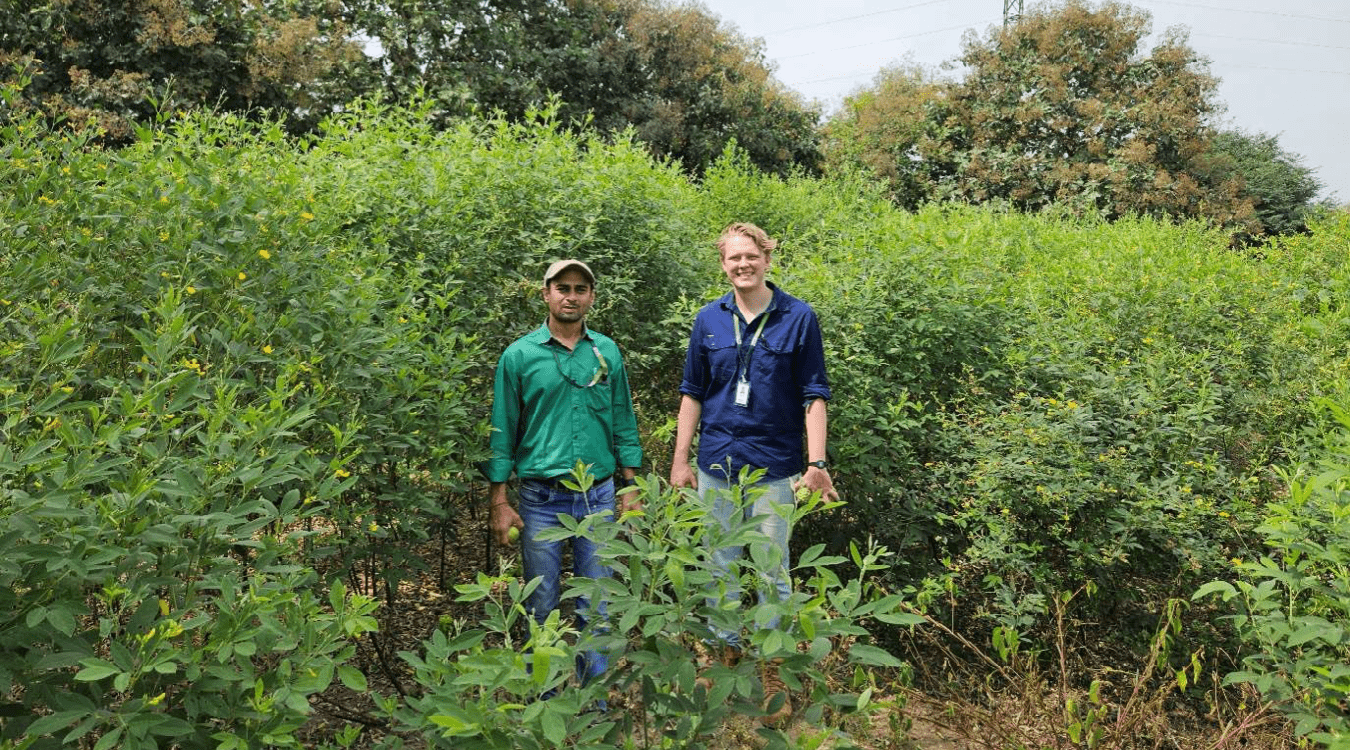

IPM strategies for pigeonpea production in India and Australia
April 15, 2025
The Crawford Fund’s highly sought after Student Awards are one way we support and encourage the next generation of Australians into study, careers and volunteering in international agricultural research.
The awards are funded by our State and Territory Committees and made possible by organisations including ACIAR, international centres, Australian and overseas universities and NGOs who host our awardees.
Applications for the 2025 Student Awards, and the inaugural Henzell Awards are now open for students at Australian universities! Applications close 12 May 2025.

Sixteen talented university students from around Australia were awarded our 2023 Student Awards. As part of this cohort, we would like to share the experience of Trevor Volp, from the University of Queensland and the Queensland Department of Primary Industries, who travelled to the International Crops Research Institute for the Semi-Arid Tropics (ICRISAT) in India, where he visited researchers working on pigeonpea and other ICRISAT mandate crops.
“The focus of my two-week trip was to learn about pigeonpea pest management, the constraints faced by Indian farmers, and start to identify areas for research collaboration between India and Australia,” said Trevor.
Pigeonpea is a multi-purpose legume crop that provides ‘tor dal’, a staple food in India. Despite this staple food status, pigeonpea yields have been stagnant for decades and India is now dependent on imports. There are currently attempts to produce pigeonpea in Australia, with the intent of exporting grain to India.
“Pigeonpea crops in both countries share a suite of insect pests, which can severely limit crop yields. In addition to decreasing yield losses, more effective management of these pests would also positively contribute the sustainability of these farming systems and the health of farming communities (particularly in India),” he said.

According to Trevor, there are several opportunities to develop more effective pest management strategies in pigeonpea. There has been a considerable effort to develop pest-resistant varieties, but this has had limited success. A future approach with a high probability of success could involve developing Integrated Pest Management (IPM) strategies using a range of tactics which have not been properly investigated, for example, economic thresholds, sampling strategies, cultural control, biological control, and biopesticides.
“My study tour mainly involved seeing (and contributing to) the work conducted by the ICRISAT entomology group on the three major pests of pigeonpea – the lepidopteran pod-borers H. armigera and Maruca vitrata, and the Asian podfly Melanagromyza obtusa. The two lepidopterans are present in Australia and were major pests of my PhD field trials, but there is uncertainty around the status of M. obtusa in Australia. There was also a suite of minor/sporadic pests of pigeonpea that I got to see firsthand in India, most of these are not present in Australia and represent incursion risks for the future,” he said.
“As the same major pests occur in both countries, there is potential for collaborative research to be conducted which is of benefit to both Indian and Australian farmers,” he said.
“The study tour developed and strengthened links between me and other Queensland researchers with Indian researchers. Going forward DPI/UQ/ICRISAT entomologists now have a working relationship and are developing joint project concepts to target the research opportunities identified by this opportunity,” he said.
“My professional network has substantially grown given the numerous experts I met during the trip, and the potential for an international pigeonpea network was discussed, like the model currently used for mungbean (https://avrdc.org/intl-mungbean-network/). An international pigeonpea network would provide experts from various countries and across disciplines with an opportunity to share expertise and align research goals,” said Trevor.
The Student Award opportunity culminated in a journal article by Trevor and his colleagues “Integrated Pest Management in Pigeonpea: Progress and Prospects” being published in the Journal of Applied Entomology.
“In terms of domestic benefits for Queensland, obviously the increased knowledge, research capacity, and access to germplasm are all clear benefits which will aid in the establishment of a local pigeonpea industry,” he said.
“The new Queensland government aims to increase the state’s annual agricultural output from $22.66 billion in 2023-24 to $30 billion by 2030. Pigeonpea presents a perfect crop to contribute to this goal – a climate resilient, multi-purpose legume, with an export market estimated at over 100kt per year (valued at >$100M AUD at recent pigeonpea grain prices). International collaboration and knowledge sharing will be a key component in the success of the pigeonpea industry in the state,” he concluded.




 0
0